04 Apr Stretch Skirt Block and Design Options
Posted at 16:41h
in Garment Blocks, Pattern Making, Pattern Making Instructions, Pattern Puzzles, Self-draft, Stretch Patterns, Womens Skirt Block
0 Comments
Following on from the Skirt Block and Design Options post I’ve separated skirt designs that use a stretch skirt block to start your pattern development. You can use my skirt block to make a stretch skirt block to use with all these pattern puzzle posts. Some of them have been sampled and those sample posts are also included here.
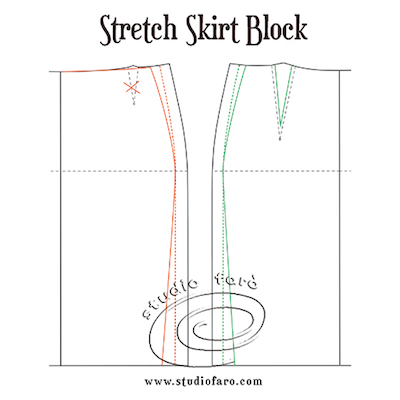
Click through to this post to prepare your very own stretch skirt block from a basic skirt block. If you don’t have a skirt block to start with you can follow the instructions at the end of this blog post to self-draft your own block.
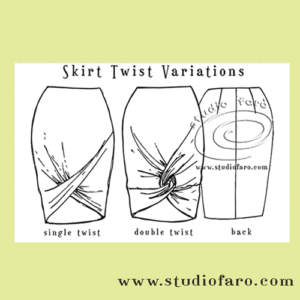
The basic rules for a stretch skirt block are:
-
- A good, clean side seam shape (be careful not to over curve the side seam when removing the dart).
- No front dart in the skirt.
- You can leave a back dart for good shaping over the seat; particularly if you’re transferring it into drape.
- The block fit has negative ease – usually 4-6cm less than your body measurement. This negative ease will vary according to the different knit fabrics you use. The stretchier the fabric the greater the garment ease.
-
This fabulous contribution from Mioara Cretu uses a close-fit knit block for the pattern development of the skirt and the tee shirt. Including some wicked twisted dean work!
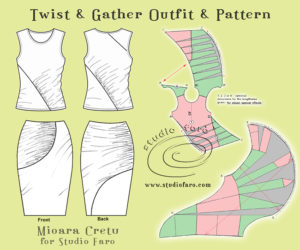
-
This pattern puzzle features two different types of twist pattern making for skirts. Please note they both work better for shorter skirts and not so much for longer styles.
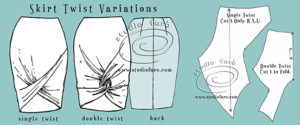
-
This skirt design will work in both woven and stretch fabrics. Be sure your skirt block is cut to suit the fabric you intend is use. If you’re using a woven then you’ll need the full 4cm garment ease in your skirt block. If you choose to work with a stretch fabric then negative ease of -4cm is recommended.
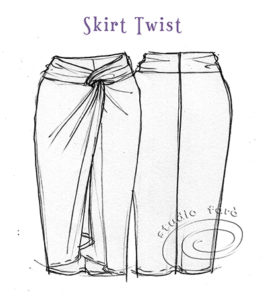
-
This little one-piece-wonder has all the side seam shaping and dart allowance transferred onto the front panel seam. To fit inside the width of most fabrics the maximum width of the pattern at the top of the waterfall feature needs to be less than 150cm wide. If necessary this pattern can be cut on the lengthwise grain.
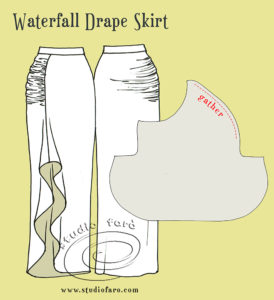
-
The success of this skirt will depend on the fit of the block you use. To be successful, a close fit is needed to maintain the drape tension between the back of the skirt and the centre front gathering.
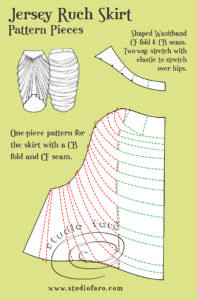
-
Use the comments area to let me know if you have any questions about these pattern making posts. 🙂
Take this moment to sign up for my fabulous newsletter! Every month or so I send an email newsletter with new website content and always, always an enormous discount code for all my sewing patterns, garment blocks and pattern making instructions.
This discount code is for subscribers only. Don't miss out!


No Comments